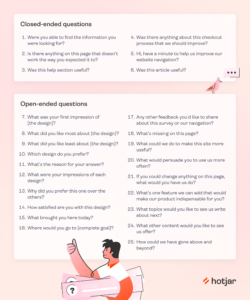Having a child is a joyous occasion and a significant event in parents’ lives. It brings about a mix of emotions, from excitement to anticipation, and can be a transformative experience. During this special time, it is essential for both parents to have the opportunity to bond with their child and share in the responsibilities of parenting. This is where the concept of shared parental leave comes into play. Shared Parental Leave is a UK government policy that allows eligible parents to share up to 52 weeks of leave and pay after the birth or adoption of a child. This policy aims to promote gender equality, support families, and provide flexibility for parents who wish to balance their work and family commitments.
If you’re an employer in the UK, it’s important to have a clear and comprehensive Shared Parental Leave Policy in place. This ensures that employees are aware of their rights and entitlements, and that the process is handled smoothly and fairly. To help you get started, we’ve compiled a Shared Parental Leave Policy Template UK that you can adapt and use within your organization.
1. Policy Overview and Eligibility
Introduction: This section provides an overview of the Shared Parental Leave Policy and its purpose within the organization. Clearly state that the policy aims to promote gender equality, support families, and provide flexibility for employees to balance their work and family commitments.
Eligibility: Define the eligibility criteria for employees to take Shared Parental Leave. Typically, this includes employees who have worked for the company for a minimum period (e.g., 26 weeks) and who meet certain other criteria set by the organization. Ensure that the criteria are fair and non-discriminatory.
2. Leave Entitlement and Pay
Leave Entitlement: Specify the amount of leave that employees are entitled to under the Shared Parental Leave Policy. In the UK, eligible parents can share up to 52 weeks of leave, which can be taken in one or more blocks. Outline the process for employees to request and plan their leave, including any notice period requirements.
Pay: Detail the pay arrangements during Shared Parental Leave. Typically, employees receive Statutory Shared Parental Pay (SSPP), which is paid by the government at a set rate. Some employers may also offer enhanced pay arrangements beyond the SSPP. Clearly state the pay arrangements in the policy, including any qualifying criteria or conditions.
3. Responsibilities and Expectations
Responsibilities of Employees: Outline the responsibilities of employees during Shared Parental Leave. This may include providing notice of their intention to take leave, submitting relevant documentation, and following the company’s procedures for leave management. Emphasize the importance of communication and transparency throughout the process.
Expectations of the Employer: Clarify the expectations of the employer during Shared Parental Leave. This may include providing support and guidance to employees, maintaining regular contact, and ensuring that employees are able to return to work smoothly after their leave. Reiterate the organization’s commitment to providing a supportive and inclusive work environment.
In conclusion, implementing a comprehensive Shared Parental Leave Policy is a valuable step towards creating a supportive and inclusive workplace. Employers who embrace this policy demonstrate their commitment to gender equality and recognize the importance of work-life balance for their employees. Shared Parental Leave benefits not only the employees and their families but also the organization itself by fostering a positive and productive work environment.
As a business, it’s essential to stay informed about the latest developments and legal requirements surrounding Shared Parental Leave. Regularly reviewing and updating your policy ensures that it remains compliant with current regulations and reflects the evolving needs of your workforce. By providing a clear and transparent framework for Shared Parental Leave, you can create a positive and inclusive culture that values work-life balance and supports employees throughout their parenting journey.
FAQs on Shared Parental Leave Policy UK
What is a Shared Parental Leave Policy?
A Shared Parental Leave Policy is a set of guidelines and procedures that outline the rights and responsibilities of employees and employers regarding Shared Parental Leave in the UK. This policy ensures that employees are aware of their entitlement to take leave, the pay arrangements during leave, and the process for requesting and managing leave.
Who is eligible for Shared Parental Leave?
In the UK, employees who have worked for their employer for at least 26 weeks and meet certain other criteria are eligible for Shared Parental Leave. This includes both biological parents, adoptive parents, and intended parents through surrogacy. The eligibility criteria may vary depending on the specific organization’s policy.
How much leave can employees take under Shared Parental Leave?
Eligible employees can share up to 52 weeks of leave under the Shared Parental Leave scheme in the UK. This leave can be taken in one or more blocks, allowing parents to balance their work and family commitments. The specific arrangements for leave entitlement and pay should be outlined in the employer’s Shared Parental Leave Policy.
